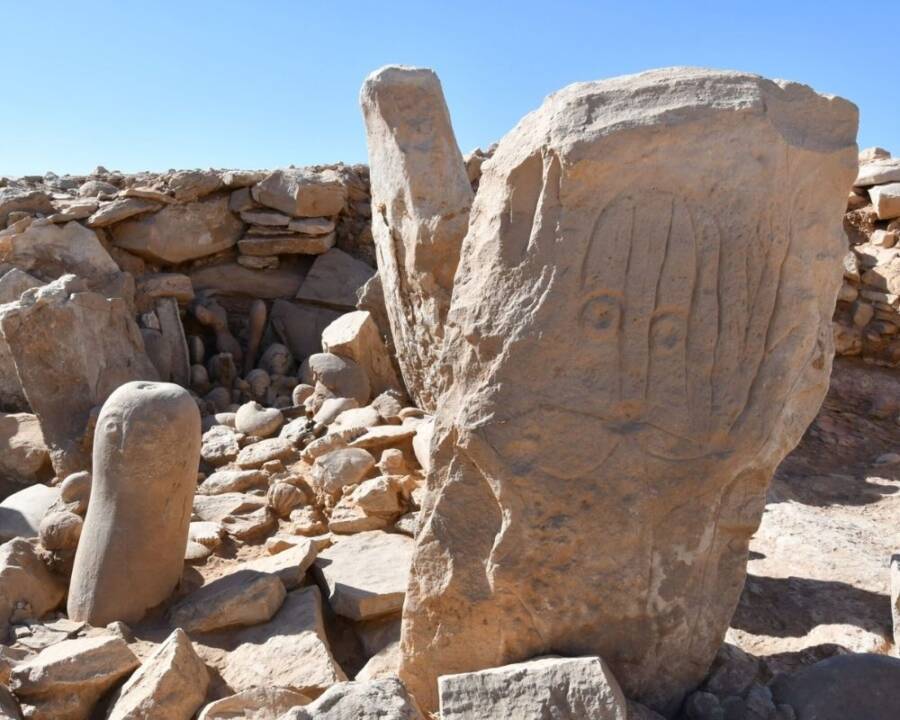Neolithic Shrine Bearing Human-Like Carvings Unearthed In The Jordan Desert
Some of the most incredible archaeology news of 2022 came out of Jordan, where Jordanian and French archaeologists from the South Eastern Badia Archaeological Project (SEBAP) unearthed a 9,000-year-old — and incredibly well-preserved — Neolithic shrine in the desert.
The shrine has several different components, including two stones bearing the carvings of human-like figures as well as 150 snail-shaped marine fossils carefully arranged next to what would have been an altar.

Jordan Tourism MinistryThe Neolithic shrine featured two anthropomorphic stone figures carved thousands of years ago.
“This discovery is unprecedented, as it constitutes a unique testimony of a complex ritual arrangement, dating back to the Neolithic period,” the archaeologists explained. “Every single component in itself is remarkable.”
The stones, which have been nicknamed “Ghassan” and “Abu Ghassan” by the archaeologists, are an especially intriguing find. They’re rare for the Near Eastern Neolithic era, and offer archaeologists a tantalizing peek at “some of the oldest artistic expression in the Middle East.”
Though it’s unclear what the stones were meant for, archaeologists suspect that they had some connection to the spirituality of ancient people. The shrines were found near “desert kites” traps — long stone walls that led into an enclosure where wild gazelles were corralled.
Indeed, archaeologists believe that hunting those animals was the “center of [Neolithic people’s] cultural, economic, and even symbolic life.”





